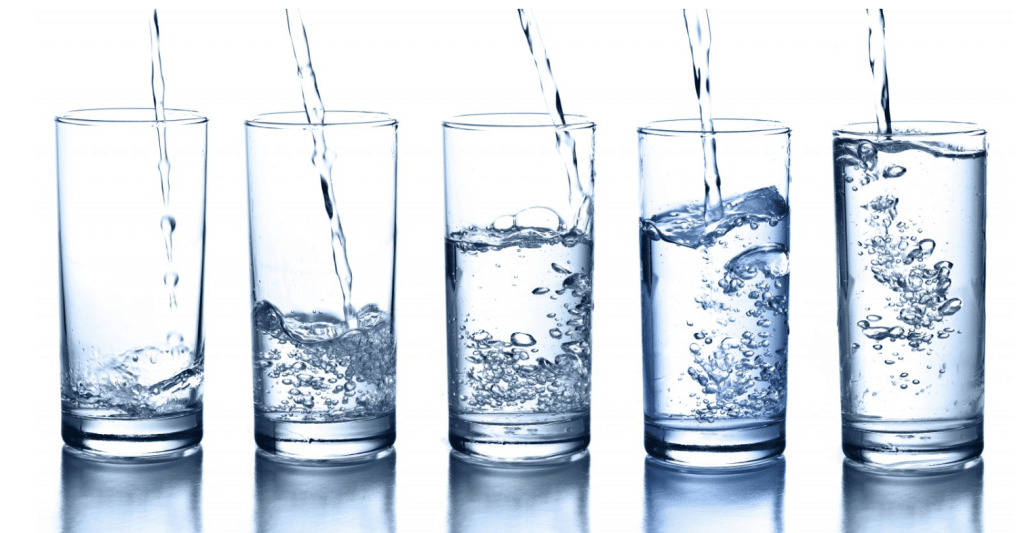These two terms are not the same but are often used interchangeably. Find out how they differ, what’s really going on in the body, and what the correct terminology is.
If you’ve been involved with endurance sports for even a short amount of time, you have no doubt heard or read that the ever so fun muscle burn that you experience is caused by a thing called ‘lactic acid.’ This obviously must be correct as so many sources cite lactic acid as the nemesis of all endurance athletes right? Not so much. This blog will discuss lactic acid vs lactate.
Lactic acid and lactate are very similar, hence why the two terms are used interchangeably. However, as the above illustration denotes, they are structurally different. As you can see on the left image, lactic acid has an extra ‘H’ – this means that a hydrogen atom is bound to an oxygen atom. On the image to the right, it is lacking the hydrogen atom which results in an unbounded oxygen atom. Alright, enough of the chemistry lesson… for now.
So here’s the million dollar question. Does lactic acid really exist in the body? Not really. This is because the blood’s pH is too neutral and acids require very low pH. Therefore, immediately after lactic acid is produced in the body, it splits into lactate and hydrogen (1). While some might think of it as semantics, when people use the term ‘lactic acid,’ they are really referring to lactate. But, words matter so it is correct to use the word ‘lactate’ vs. ‘lactic acid.’

Historical Origin
For many years, the thought was that an increase in blood lactate (or as many people call it, lactic acid) within the body was the cause of the burning sensation. The primary reason for this belief was because of a study done in the 1920s by Dr. Otto Meyerhof. Using electric stimulation to a deceased frog’s leg muscles, Dr. Meyerhof observed that the leg muscles of the frog twitched initially when subjected to the electric stimulation.
However, after a while the twitching ceased. The cessation of muscle activation correlated with high levels of blood lactate. Thus, Dr. Meyerhof concluded that an increase in lactate causes muscular fatigue (2). This theory was challenged and ultimately put to bed by the research of Dr. George Brooks, who while studying for his PhD dissertation, found the opposite of what Dr. Meyerhof had proposed was true.
Dr. Brooks discovered that in actuality, blood lactate is an important muscle fuel and not a waste byproduct that causes the burn, as earlier thought (3). Pyruvate (the output of the metabolism of glucose known as glycolysis) can be oxidized and used as fuel for the Krebs Cycle (oxidative energy pathway), or it can be converted to lactate, which, in turn, is converted into glycogen in the liver. Blah, blah, blah… so what the heck does all this Krebs, Pyruvate stuff mean? It means that since pyruvate can be converted to lactate, and lactate can be converted to glycogen – glycogen stores can be increased which therefore provides a longer lasting energy supply.
In addition to the previously noted study by Dr. Meyerhof in which he concluded that high levels of lactate caused muscular fatigue (2), two other studies have had a profound impact regarding the erroneous perception of lactate.
In 1857, a biochemist named Louis Pasteur deduced that lactic acid formation was possible only in the absence of oxygen (anaerobic). This is called the Pasteur effect (4).
Secondly, in 1923, research by physiologist A.V. Hill theorized a correlation between high work levels and high blood lactate levels. More specifically, he theorized that at high intensities, the aerobic system was not adequate to provide fuel to the body and therefore the anaerobic/lactic acid system would “switch on” and take over from the oxidative system (5).
In the years since then, the following has been found to be true:
- Lactate is a fuel
- Lactate is produced at all times
- The proposed anaerobic system does not “switch on” after the oxidative system is exhausted
- Lactate is not responsible for muscle burn
So What the Heck Causes Muscle Burn?

The burn is the result of a buildup of acidity in the muscle cells. More specifically, this acidity is caused by the release of hydrogen ions during the fast turnover of Adenosine Triphosphate (ATP) (6). This release of hydrogen ions within the muscle cells causes an interference with the ability of the muscle fibers to contract properly. Unless the intensity of the exercise decreases, the high level of burn (acidosis) will eventually cause cessation of the exercise (7). A role of lactate is to help buffer and neutralize the hydrogen ions, thereby delaying the burn (6).
How and When Does Lactate Increase?

When a person begins to exercise, the oxygen consumption of the individual increases. However, at a certain point, an oxygen consumption plateau is reached. This plateau is often referred to as steady state or steady rate. What this means is that there is a balance between the energy being used by the muscles doing the work and the energy being created aerobically. During this steady-state condition, pyruvate accumulation is minimal. As noted above, this is because any pyruvate being produced is either oxidized or converted to lactate, which in turn is converted to glycogen (8).
Intramuscular levels of lactate can elevate rapidly if the intensity of exercise is extremely high. Research by Gaitanos et al. found that intramuscular levels of lactate can increase by 7 mM (a substantial increase) in just six seconds when performing high-intensity cycle efforts (9). Blood lactate levels increase to approximately 40 times their resting level when going from rest to maximal exercise intensity (10).
While there is always lactate being produced, at rest or at low to moderate intensities of exercise, the lactate is “cleared” within the muscle. So what exactly does “cleared” mean and how does this influence LT? In regard to LT, when you see the term “cleared,” think “used for energy.” Lactate is cleared intra-muscularly by oxidizing the lactate and converting it back to pyruvate (oxidative fuel) within the muscle in which lactate was formed (11).
This clearing method prevents the intra-muscular lactate levels from increasing too fast to the point where lactate levels reach the intra-muscular threshold and spill out into the bloodstream. Therefore, intra-muscular lactate levels can increase substantially (up to five times resting levels) without any increase in blood lactate levels (12). However, when the intra-muscular lactate threshold is breached, some lactate exits the muscle and enters the circulatory system and thus increases blood lactate levels. This is representative of the lactate threshold.
Once blood lactate enters the circulatory system, it is shuttled to areas of the body that can use it for fuel (i.e., brain, heart, other skeletal muscle). Blood lactate that is not utilized is sent to the liver, where it is converted to pyruvate and then to glucose. The glucose is sent (via blood) to the muscles to be used as fuel. This is representative of the Cori Cycle (13).
An analogy to LT would be to equate a muscle fiber to a drinking glass, the water within the glass to lactate, and any area outside the glass to the circulatory system. Levels of water (i.e., lactate) can increase and decrease, but so long as the levels do not breach the top of the glass (i.e., lactate threshold), blood lactate levels will not increase. However, once the water spills over the top of the glass, the blood lactate levels increase as there is an increase in lactate within the circulatory system.
Now That I’m an Expert in Biochemistry, How Can I Prevent the Muscle Burn?
In endurance sports, a key marker for athletic performance is lactate threshold. Lactate threshold is the limit to which the body starts to produce more lactate than it can clear. This is when the “muscle burn” begins to set in. As blood lactate accumulates, overall muscle work capacity decreases until the effort falls below the lactate threshold, or the activity is stopped. At rest the body can eliminate, or buffer, lactate either via release into urine, used as fuel by other organs like the brain, heart, and other muscles, or processed in the liver back to glucose.
Delay of Onset of Blood Lactate Accumulation (OBLA) corresponds with a longer lasting athletic performance at a relatively high intensity. Delaying OBLA is achieved primarily through training, and specifically training around one’s lactate threshold and ideally, via interval-type and/or tempo workout sessions. By intentionally focusing training sessions on lactate threshold development, an athlete can sustain a harder effort for a longer duration before OBLA occurs.
Persistence of the Myth

So why does this myth persist. There are likely a few reasons for it.
First starters, the term ‘lactic acid’ has the word ‘acid’ in it. And what comes to mind when you think of acid? Burning, right? Therefore, to the unassuming athlete, this makes perfect sense on the surface. Acid = burn.
Perhaps the biggest reason for the persistence of this myth is that myths die hard… or in the case of lactic acid causing muscle burn, it doesn’t die! Fortunately, at least among endurance sport athletes and coaches, this myth is slowly becoming debunked as more and more people are spreading the correct information about lactic acid vs. lactate. However, if you Google ‘lactic acid muscle burn’ – you’ll still see how rampant the association between the two is and moreover, that lactic acid is the same thing as lactate.
Summary

While this blog post likely provided you with an unwelcome amount of biochemistry information that you didn’t ask for, or possibly care to know about – my hope is that this post provided you with enough context to understand the reason why lactic acid and lactate are not the same thing and moreover, why lactic acid does NOT cause muscle burn.
OK… Biochemistry 101 is over – office hours are cancelled and class is dismissed 🙂
- https://www.bostonsportsmed.com/2013/08/the-lactic-acid-myth/ (908)
- Robergs, R.A., Ghiasvand, F., & Parker, D. (2004). “Biochemistry of exercise-induced metabolic acidosis“ American Journal of Physiology: Regulatory, Integrative and Comparative Physiology. 287: R502-R516. (24)
- Brooks GA (1985a). “Lactate: gBlycolytic product and oxidative substrate during sustained exercise in mammals the lactate shuttle.” In Comparative Physiology and Biochemistry: Current Topics and Trends, vol. A, Respiration-Metabolism-Circulation, ed. Gilles R, pp. 208218. Springer, Berlin (25)
- Lehninger, Albert (2008). “Principles of Biochemistry” New York, NY: W.H. Freeman and Company. p. 539. ISBN 0-7167-7108-X (509)
- A. V. Hill, C. N. H. Long and H. Lupton.“Muscular Exercise, Lactic Acid, and the Supply and Utilisation of Oxygen” Proceedings of the Royal Society of London. Series B, Containing Papers of a Biological Character. Vol. 96, No. 679 (Sep. 1, 1924), pp. 438-475 (510)
- G. Kolata. “Lactic Acid, Its not a Muscle’s Foe, Its Fuel”. The New York Times, May 16, 2006. (26)
- Reza M, et al.Appl. Physiol. Nutr. Metab. 2011, 36:1-11, 10.1139/H10-073. (28)
- Donovan CM, Brooks GA. “Endurance training affects lactate clearance, not lactate production”. Am J Physiol. (1983), Jan;244(1):E83-92 (27)
- Gaitanos G C, Williams C, Boobis L H. et al “Human muscle metabolism during intermittent maximal exercise.” J Appl Physiol 1993. 75712–719.719 (559)
- Osnes J B, Hermansen L. “Acid base balance after maximal exercise of short duration.” J Appl Physiol 1972. 3259–63.63 (566)
- Brooks GA. “The lactate shuttle during exercise and recovery”. Med Sci Sports Exerc. 1986 Jun;18(3):360-8 (319)
- http://www.newintervaltraining.com/the-science.php (513)
- http://www.wiley.com/college/boyer/0470003790/animations/cori_cycle/cori_cycle.htm (515)









Absolutely loved how you explained this. Made perfect sense.